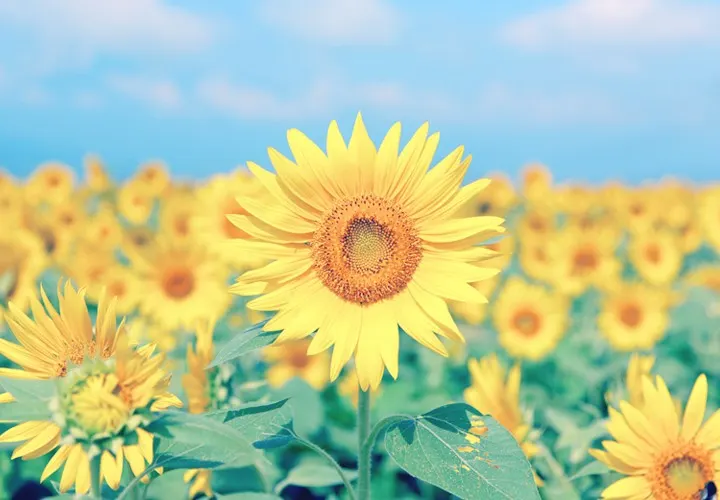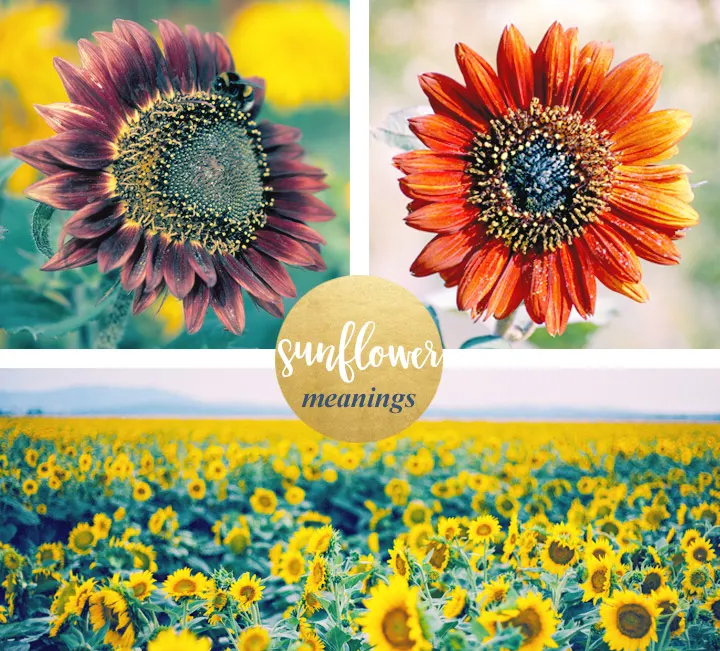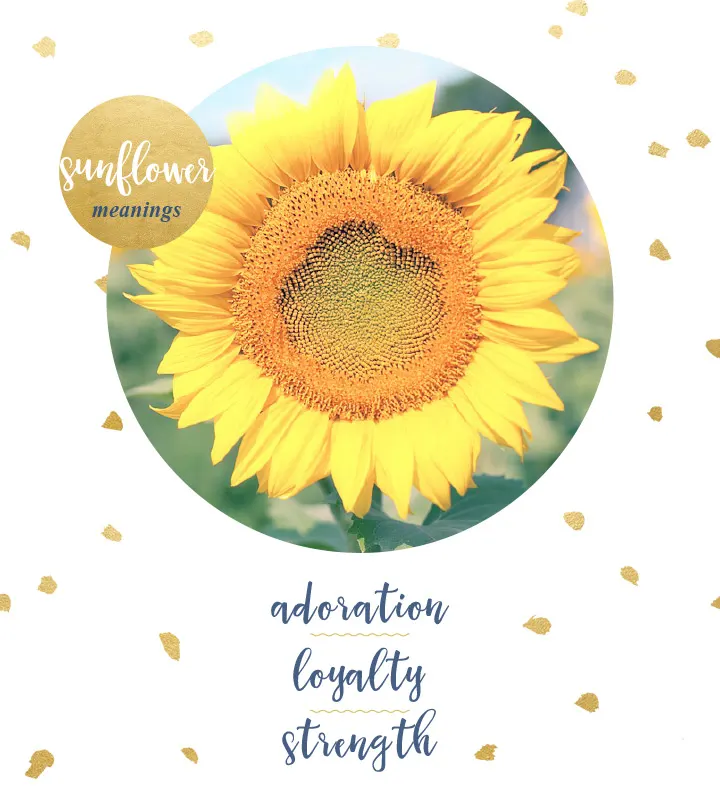March 02, 2016
Sunflower Meaning and Symbolism
Sunflower Story & Origins
The sunflower’s name comes from its tendency to reposition itself to face the sun. It’s genus, Helianthus, is rooted in two Greek words — “helios” meaning sun and “anthos” meaning flower.
The ancient Greek myth of Apollo and Clytie is one explanation of why sunflowers turn towards the sun. In this story Clytie, a nymph, adored Apollo. At first, he loved her back, but soon he fell in love with Leucothoe. Because of her jealousy, Clytie told Leucothoe’s father of the relationship and he punished her by burying her alive.
In anger, Apollo turned her into a flower, but even in flower form she still loved him and would spend her days watching him as he moved the sun across the sky in his chariot, just like sunflowers move to face the sun.
Sunflower Meanings
Because of the myth of Clytie and Apollo, the sunflower most commonly means adoration and loyalty. However, sunflower meanings can vary across cultures.
In China, people associate sunflowers with long life, good fortune, and vitality.
To Native American groups, sunflowers represented harvest, bounty, and provision because they provided seeds, pigment, and more.
Sunflower Symbolism & Colors
The sunflower’s yellow color symbolizes vitality, intelligence, and happiness. The color yellow also traditionally symbolizes friendship.
Sunflowers also symbolize worship and faithfulness in various religions because of their resemblance to the sun, which is associated with spiritual knowledge and the desire to seek light and truth.
The Incas used sunflowers to symbolize the Sun God, and brought them to temples for worship. The priestesses also wore sunflowers on their garments and as crowns.
Sunflower Cultural Significance
Sunflowers have also been used by countless artists. The most well-known portrayal of sunflowers is Van Gogh’s Sunflower series, which includes Vase With Twelve Sunflowers, Two Cut Sunflowers, and Four Cut Sunflowers. Ai WeiWei was also inspired by the flowers in his Sunflower Seeds exhibit, an installation of millions of porcelain seeds handcrafted by specialists working in small-scale workshops in China, symbolizing the relationship between the individual and the masses.
Authors and other influential figures have used sunflower symbolism to inspire them too, causing them to write encouraging words like:
Keep your face to the sunshine and you cannot see the shadows. It’s what the sunflowers do. – Helen Keller
Every friend is to the other a sun, and a sunflower also. He attracts and follows. – Jean Paul
Light-enchanted sunflower, thou/ Who gazest ever true and tender/ On the sun’s revolving splendour. – Pedro Calderon de la Barca
Sunflower Facts
Sunflowers are often given on 3rd year wedding anniversaries as signs of adoration, loyalty, and strength.
Sunflowers typically bloom in the summer.
Many sunflowers are heat and drought tolerant, making them easy plants to grow.
Sunflower Uses
The sunflower has been used throughout history in many different ways. Sunflowers were originally cultivated by Native Americans, and used for food and medicine. Medicinal uses included using the juice from the stems to treat wounds and infusing the plant in water to treat kidneys and chest pains.
Though sunflowers aren’t typically used medicinally anymore, they are still grown for agricultural purposes. The two main types of sunflower varieties grown are the oil seed type, which has small black seeds, and the non-oil type, which has larger seeds with a thicker hull. Sunflower oil is used for cooking and in beauty products, and its health benefits include improved heart health and lower cholesterol.
Whether you’re simply trying to brighten someone’s day, or you want to show how much you adore them, the vibrant, fun nature of sunflowers make them a great choice.
Resources
http://university.langantiques.com
http://www.heritage-history.com
https://www.extension.purdue.edu
Image Sources
Top image: CC Image courtesy of mrhayata on Flickr
Middle image: top right CC Image courtesy of Matt Mets on Flickr, bottom CC Image courtesy of Dave See on Flickr




